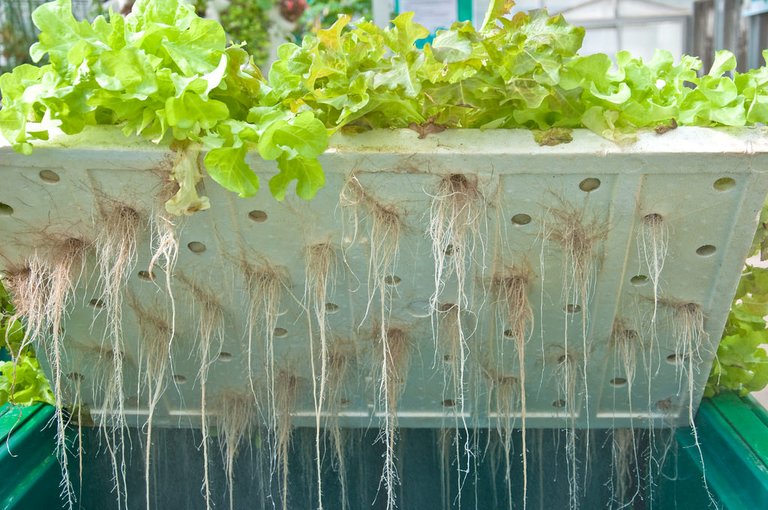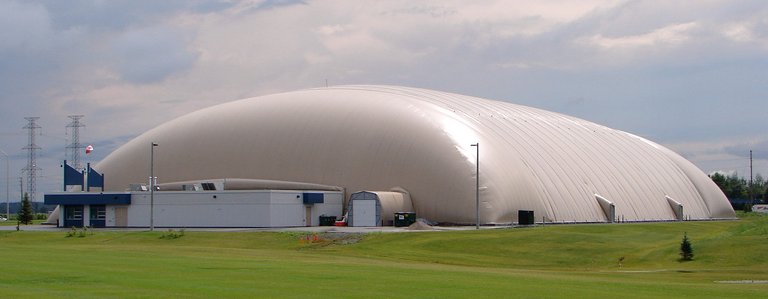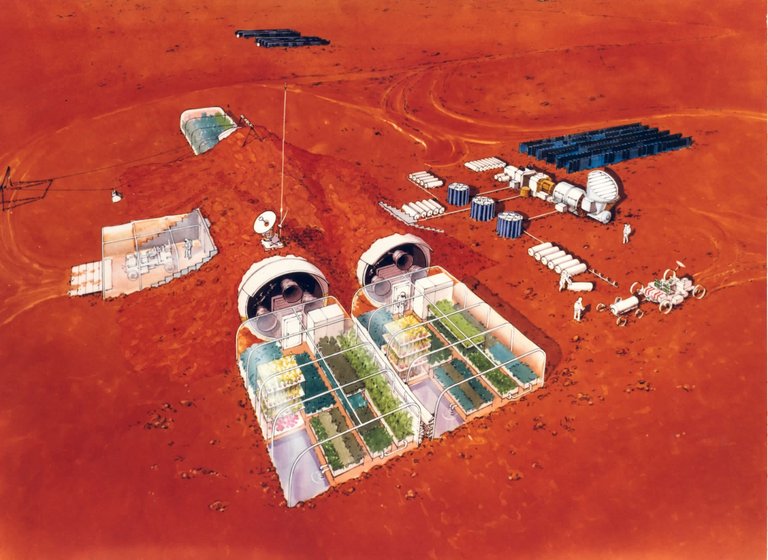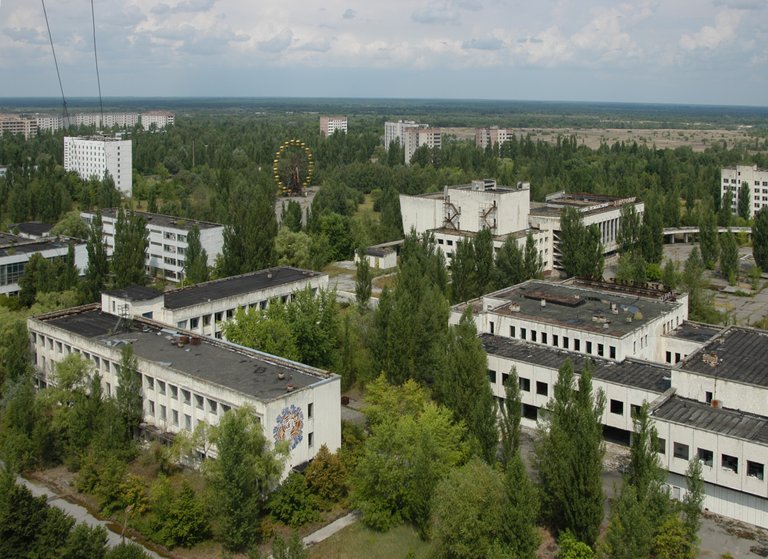Trying to scour the Internets for any reliable studies regarding IN-SITU resource production and make an easy to read, easy to understand Mars Colonization Handbook. Mars and science in general should not be restricted to established scientists, maybe the next big scientist is you, so I am trying to make you understand it and enjoy it. Science is so fun.
We have talked about the science of producing air, water, energy and about the techonology of getting there in the first place, and now we will address the wannabe Martian farmers.

Source: free to use or share

The science of growing plants
We are going to start by understanding what does a plant essentially need in order to grow and thrive. The process in which plants get their energy is called Photosynthesis, and it's the process of converting light energy into chemical energy. The carbohydrate molecules, like sugars, are synthesized from CO2 and H2O. Oxygen is also released as a byproduct of the reaction. I am not going to enter into details regarding photosynthesis, a fellow Steemian did a wonderful in-depth article that I could never compare to. I am only going to do a quick chemical outline of photosynthesis:
6CO2 + 6H2O -> (in the presence of light) -> C6H12O6 + 6O2
By now we should already know that Mars has a CO2 rich atmosphere and by the time we would need to do farming on Mars we should have already mastered the art of creating oxygen, like it was covered in my previous articles. Water and energy in the form of light would be already supplied by the IN-SITU systems.
The process of research starts with the basic question: Was it attempted or done before?
Of course, we are already pretty advanced with the research here. We have started in 1982, on the Soviet Salyut 7, continued through the Skylab, Mir and ISS, which had what was named "Veggie", the first real vegetable garden in outer space. Many plants were grown, tested and even brought back to Earth with the astronauts eating a part of the harvest on a regular basis for the last 10 years. Here is a short video to get you up to speed with what is considered known about farming in space.
Source: NASA’s Johnson Space Center

Creating the first garden on MARS
According to a study published in the US National Library of Medicine, the first few experiments will analyze using the higher plants for photosynthesis, and hydroponics was the chosen method of growing them. Because the reduced sunlight would affect the photosynthesis process and because of the cold temperature variations, the only method of growing crops before terraforming is to grow them in closed environments.
 Example of hydroponics. Notice the soil absence.Source
Example of hydroponics. Notice the soil absence.SourceHydroponics is the method of growing plants without soil, only by dissolving nutrients in water. By using perlite or gravel to cover the otherwise exposed roots of the plants (which Mars could supply), only the seeds and the nutriments need to be brought from Earth. NASA is the greatest researcher in this field, managing to use LED lighting in a different color spectrum with increased efficiency. The use of a bigger hydroponics farm could also be used as a bioregenerative life support system. Although there are other variations of the hydroponics such as aeroponics or fogponics, the system's process is largely the same, not needing any subsoil or soil material to grow. Water filtration systems could help us reuse the water or simply use waste water from the colony. More reading about filtration could be found in @temitayo-pelumi's article on activated carbon fundamentals, which is an easy read and a wonderful explanation of the concepts. Even more, such filters could be made IN-SITU, from minerals already present on Mars.

Plants and low gravity - low pressure environments
Plants are able to grow and survive in microgravity but there is more research needed to tell if there are any long term effects of ingestion in terms of the plants chemical structure. Some other studies found out that growing plants in microgravity or zero gravity could increase the risks or flooding or droughts by simply having too much or not enough water just floating around the roots without it being able to flow. In the case of Mars it appears that this is not an issue and the reduced gravity might even play a beneficial role in reducing the water and nutrients needed by the farm, by slowing down the rate of which they flow into the subsoil and away from the roots, thus increasing their exposure time.

Example of a big dome. On Mars it would be made out of sturdier materials and it would most likely be transparent.Source
Pressurizing a field at the Earth's pressure of one atmosphere needs a lot of engineering and structural support. Thus growing the plants in a pressurized system is much more expensive than just protecting them from the cold, so by using special types of plants that can survive under low pressures, there could be a reduction of a full degree of magnitude on the pressure. Plants can indeed function at a tenth of the Earth's pressure, according to the study. As a further point of research, the GMO industry could come up with even better optimizations for the Martian Atmosphere, including plants that can maintain photosynthesis at very low temperatures or plants that need a reduced intake of minerals from Earth .

What about minerals from Mars? Can we use nutrients produced IN-SITU?
To carry out the photosynthesis process, many nutrients are needed by the plants, the most important of them would be Nitrogen , Potassium and Phosphorus.
Nitrogen (N) is the main component of chlorophyll, responsible for the green color of plants and for facilitating photosynthesis.
Potassium (K) helps to open and close the leaves pores, regulating the water and carbon dioxide (CO2 quantities.
Phosphorus (P) is the main ingredient of photosynthesis.
Thus finding these minerals to be used as fertilizer will be very important in the food self-sufficiency of the colony. It is worth mentioning that human feces could be an important part of obtaining some of these minerals, but through mining, the other minerals could be located and produced locally.
By revisiting our old graphs on the atmospheric composition we can find out that almost 3% is Nitrogen. So we have the following calculation:
Total mass of atmosphere: ~2.5 x 1016 kg
Nitrogen (N2) - 2.7%
Total mass of atmospheric N2: 6.75 x 1014 kg
Surface Area: 1.4437 x 1014 m2
 Illustration from NASA's 1980's A Case for Mars study
Illustration from NASA's 1980's A Case for Mars studyThis means that there is sufficient Nitrogen to sustain a thick enough soil to cultivate plants or even plant some trees with deeper roots. We just need to be extracting it from the atmosphere and fix it in the subsoil, at first in small amounts for the greenhouses built and then at a greater scale when terraforming options turn into a reality. I am not able to discuss about this process at length here, called the Haber Process, since it would make my article super long and super boring but I have found @mountainwashere's article about it here and @justtryme90's article both very detailed and correct - also not super long and not super boring, just to be clear :)
There is evidence of other minerals in the composition of igneous rocks as some of the Mars experiments already have uncovered. To find more about igneous rocks, some fellow @SteemSTEM writers with far more understanding of the subject wrote about it (@sooflauschig, here and @the-geekiest-one here). Trace elements of Magnesium, Aluminium, Sulfur, Calcium and Titanium were also found, in lower concentrations than in Earth's crust but in sufficient quantities to at least allow for reduced farming area by shifting soil, even without any GMO modification. In truth, trying to accommodate Earth plants to the Mars environment is probably not the best approach, but regardless, it is possible even now.
Further research on each of the absolutely necessary materials to sustain plant life have given me optimistic results, all have been confirmed in sufficient quantities as to sustain plant development on a widespread scale.

Radiation
It could pose a big problem because of the thin atmosphere that can't protect the crops, and by using thicker and radiation resistant panels would completely obscure the even-so faint sunlight. We could always move the whole farming area underground or in volcanic crevasses or lava ducts but what if we choose to grow them on the surface?
Being born in the same year as the Chernobyl disaster (and close to it) made me very interested in the subject and as time passed I have observed the life around it refusing to wither. Pictures and studies made there show that plants tolerate the radiation pretty well, with only a 5% change in plant proteins, which don't necessarily get transmitted to the next generations. According to a study made by the Slovak Academy of Sciences, which I only read about on Astrobio.net, the plants proteomes seem to remember the early days of Earth formation, when radiation was ever-present and could easily adapt to radiation.
While radiation from Chernobyl is in no way compared to the radiation levels on Mars, the studies remain conclusive about thriving plant life in inhospitable conditions. Further research is needed to determine if the radioactivity changes in those 5% of the proteins would be transmitted to the humans or if GMO crops could identify and disable such changes.

Farming on Mars: It's a GO!
At least in enclosed spaces, using little more than a tenth of the pressure on Earth, which can easily be maintained using composite soft materials which don't take much space. Nutrients can be scavenged IN-SITU, usually as the byproduct of water mining that we discussed in an earlier article, and fertilizer from the colony can be treated and used in this matter, reducing the footprint of the colony even further. LED lighting can be used to increase the reduced solar flux as water and oxygen should already be supplied by the life support systems. GMO seeds could be used to make the plants yield even more by reducing some of the harder-to-get conditions on the surface and having colonists on the ground can make this progress even faster.
It took me a little too long to write this article, but I have tried to cover all aspects of such a vast undertaking. If you feel you can add something, please do so, it's our collective minds that will make Mars possible and I would love to hear from you. Also don't forget to talk about science to your children or friends. Maybe the next scientist is you or right there beside you :P
 Additional sources and further reading: 1, 2, 3
Additional sources and further reading: 1, 2, 3
https://www.space.com/9597-space-farmers-grow-crops-planets.html
https://www.astrobio.net/also-in-news/radiation-no-concern-for-space-crops/
Ask me, as I seem to be able to remember these things, even though I can't remember a five item shopping list :D
Additionally, if you are a new SteemSTEM member, or even if you are not but you want to contribute and better yourself in the process, I am open to give you all the guidance I can.
We are all scientists, it's how our brain works and we can all grow together as a community!





Wow! Thanks for the impressively detailed post. As I was reading through it I started to think about the people that grow cannabis. You would think with their experience growing things in not native conditions under duress, they might be just the type of person that could make a garden grow on Mars. Pair them with a botanist and you might have a winning team! Thanks for sharing your post!
Like @ackza? I found him while documenting my own article! He wrote a great article on the subject. I will have to read his newest articles, because the rewards may have closed to him but his information being shared is timeless. Thanks @ackza :P
Very cool! I will have to check them out.
Hi @Alexdory I found this a very interesting article. It is also interesting that you talk about using lower pressure atmospheres for growing plants, 0.1 Atmosphere, as you say this has enormous implications for reducing structural requirements. Technically, humans can probably cope with 0.5 Atmosphere or lower as well, I am just not too sure if that can be done comfortably.
I have done further reading into the fact that in order to help human maintenance, the soft inflatable materials could withstand temporary pressure increases. This would allow humans to go in without suits for a small amount of time, which would not be that bad for either the humans or the structure. But further research is needed and in the meantime very light spacesuits could be used for that maintenance, which can be complementary assisted by remote controlled robots attached to the ceiling or some VR techniques like the robots performing medical procedures. The science is there and it's so vast that everything can have a solution.
Very nice and easy read, as easy as these kinds of subjects can be :)
I really appreciate the effort of disseminating the information to form that can be easily understood by more and more people. You are correct that this effort is a collective one, and that anyone can come up with a fantastic idea regarding what needs to be done.
I can't wait to read about terraforming :D
I will get there. Thanks for dropping by. I actually will touch a few subjects regarding human behavior and societal changes needed to work/ live there. Maybe I could add your input there as you have very good ideas and I would recommend anyone who is interested in social ideas to read more of your pieces. Cheers!
Yep. That is a subject that needs debating, how to create a social structure that can help maximize the chances of success and also keep human psychological comfort in mind. It's a hard one, but I would gladly discuss this :)
I applaud your write up @alexdory.
Recent studies have been putting efforts into the colonization of Mars. Getting plants to survive there is a step into achieving this.
Highest regards!
Let's hope that SpaceX doesn't postpone it for long. For now the Martian Phase window of 2022-2024 is targeted but who knows if the BFR will be ready by then.
And that is just an expedition not the actual colony. But it should leave some working systems there, including the Power, Oxygen, Fuel generator.
Very interesting! I hope Elon Musk can get us there. Thanks for sharing! I just shared one on holographic cosmology that you may enjoy.
I read it and it is pretty good. I even left a smart if rather long quote. We have many good authors at @SteemSTEM, so you could broaden your knowledge with ease. There is a lot of quality material to keep you busy for months :D
It's great to see that all of the building blocks are present to be able to sustain plant life on Mars.
It is going to be quite expensive to get the materials there, though. Especially considering the nitrogen requirements.
Now you've got me thinking about whether it would be cheaper to just send fertilizer from Earth to Mars or figure out how to operate the Haber process on Mars. Either option requires sending extensive amounts of materials there. As a chemical engineer, now I'm thinking about the design constraints of such a process in lower pressure and gravity. haha
Thanks for this article. I think you did a great job presenting all of the issues surrounding plant life on Mars in a readable, easy-to-understand way. Keep up the good work. I can't wait to see more articles like this.
I was referring to the Haber process :D but I didn't have time to write about that too. I would make the most boring articles otherwise. I usually search on steemit and provide a link. I will do that before the article locks itself :D if i find a good enough Haber process article on steemit.
Update: I managed to edit that in, actually found two friends that wrote great pieces about it.
Thanks for the input. I don't vote you enough, I know!
I think the Haber process is fascinating. First, because it gave rise to modern farming, and secondly, because hardly anyone has heard of it. It's so important to everyone's lives, but it's one of the marvels of science that largely gets neglected.
Also, the design process is fascinating to me. They had to construct something that could safely operate at huge pressures. No doubt we'll have to do the same thing if we ever stretch out to living on other planets.
Thanks for your thoughts. I haven't really seen any other articles about the Haber process here, but I'm glad that #steemstem is encouraging people to write more posts like this. If I wasn't so busy with my other initiatives, I'd probably write more science-themed posts, too.
I know, I am also trying to cover a lot of ground, but contribute to many things so if they won't be upset that I am only trying to help everyone, I will continue writing about the things I like, it's the only advice that I can give you. At the end of my posting day I am usually happier :D
Great research. Thanks for a very informative post.
Thanks! I will try to post more often from now on.
Very interesting! I bumped on the dome image as this may actually be unrealistic for Mars. I remember having read somewhere that the first places to be inhabited on March should be buried underground because of cosmic rays (from which one needs to be protected).
Yes, on my previous article most probably.
The dome is not for inhabitants but for the hydroponic farms. The inhabitants should live underground until technology can protect them better from cosmic radiation since the atmosphere is too thin to actually help (for now). Having to launch huge protective living quarters is not a good approach at this level of tech we have. This might change after terraforming.
Now I am feeling stupid... I should have made the connection... I am probably reading way too much stuff around here :/
Relax ! I am the same when I am tired. Except that my English turns into toddler English too, and my French turns into definitely not French :D
I am always in a relaxed state, don't worry. However, I cam feel stupid at the same time :D
Seems like we are heading to Mars... I find this article very interesting and a new development for scientists. I just hope not only the rich get to enjoy Mars. 😁😁
There are many commercial companies that would like to benefit from the space race nowadays so the cost of actually getting there might be reduced by several orders of magnitude. Private companies always seems to be able to offer a lower price than the state agencies. Something about the public funds being easier to spend :D
This reminded me of the movie I saw sometimes ago; "The Martian". Where Mark Watney planted potatoes in Mars. :D
Oh yes. It was funny. Some things were accurate, others were not. Good movie in the end.
National Geographic had a dramatic series on Mars (half documentary half artistic).
Wow!! Thanks
Your mars colonization series have kept me awed about what technology/science can do for us. I've read every single series and love it.
Good work man
Thanks a lot! I am happy I was able to inspire you. I have more info to give on my list. I am using each opportunity to explain some of the mundane science involved in the bigger systems. Found this is a good way to bind together school physics or math with greater science.
Congratulations! This post has been upvoted from the communal account, @minnowsupport, by alexdory from the Minnow Support Project. It's a witness project run by aggroed, ausbitbank, teamsteem, theprophet0, someguy123, neoxian, followbtcnews, and netuoso. The goal is to help Steemit grow by supporting Minnows. Please find us at the Peace, Abundance, and Liberty Network (PALnet) Discord Channel. It's a completely public and open space to all members of the Steemit community who voluntarily choose to be there.
If you would like to delegate to the Minnow Support Project you can do so by clicking on the following links: 50SP, 100SP, 250SP, 500SP, 1000SP, 5000SP.
Be sure to leave at least 50SP undelegated on your account.
Content type: Long, technical overview





Awarded 5 out of 6 owls:
Excellent job!
Details: The post contained a few minor spelling errors ( e.g too less water -> not enough water) but it was of sufficient standards that the spelling and grammar owl was awarded. The originality owl was not awarded since it requires that the content is explained in a creative/novel way.
I was expecting this post and I loved it. You did your homework, as always. Thanks for breaking it down for regular folks like me without a scientific background. Thank you!
Thank you! I am glad you liked it. I can't wait to read more from you. I neglected TheSteemEngine lately, and I expect a Steemit upgrade which will allow better control of who we see. You would make the shortlist :P
Wow! Thanks for the infos and also congrats for this well written article!
P.S. "I can't remember a five item shopping list :D " me too !!! haha:))
My professor, Stefano Mancuso, was on one of the teams that studied plants in space with the European Space Agency to understand how they develop and perform under hypergravity. You can find the team and results of one of their more popular studies here. One thing he said to us just the other day is that if we think we will be able to cultivate plants on Mars at a significant enough level to support human life and/or transform the planet into something hospitable, we will be waiting millions of years. Sure, the conditions there resemble, as you wrote about, what it was like at the beginning of life on Earth, but how long did it take in order for the planet to become something that could sustain human life as we know it?
Let's remember that the first wheat that human consumed that was fairly late on the evolution timeline had only a small percent of the energy levels of the current wheat. Through engineering and selective breeding and other such methods, early humans managed to bring it to what we have now. So if we can increase the energy levels through GMO's, we can reduce those millions of years to hundreds of years.
Plus we only need to start to feed 10 people, then 50, then 200 and so on. It will grow with the colony. Nobody is going there hoping to start the terraforming on the next day :P
In the Nineties a friend of mine and his wife were all into hydroponics. They touted it as being the trend of the future. They even talked about gardens on space station colonies as well as Mars. They tried to open a store that sold Hydroponic supplies. They were a little ahead of their time but sadly it didn't catch on then and they closed within a year. I think if they were able to try such a venture now they would have had better success.
They could brand their business eco, green or BIO and they would sell everything :)
And it will only get more popular in the future.
I know you don't want to go into a full-on Haber process discussion here, but it is extremely energetically expensive. Do you have any comments on how that relates to your Martian energy post?
Also, once fixed, N is pretty recyclable through biological systems (with enough care and effort). What's your opinion on shipping a couple a tons of ammonia to Mars?
While I wasn't able to find out a simple calculator of energy, I suspect that by using a catalyst, the energy should be manageable. Also I think the process would be scaleable, so in the beginning they would only try to make a little ammonia and other molecules to use in controlled enclosed areas and they would use the spare energy from the Nuclear Generators (running at the same peak rate) which would go to waste in the days when Solar Panels or Wind generators have higher yields. So basically ammonia production would be of secondary importance in the beginning. Plus, the energy technology will evolve, by the time we will need to do it on a full scale we will be farther than what we can imagine now.
As for shipping ammonia to Mars (if it can be safely shipped - I wouldn't want to be near the Landing Zone of the Ammonia Lander :D ) I think that it will be facilitated by reduced shipment costs due to reusable craft and other commercial interests in the area.
Very good questions, actually. Thanks!
Offhand, it's something like 1% of the world annual energy budget to meet the global demand for ammonia. There are catalysts which can reduce that, but they all have a slew of complications. If you can think of one which works well, do tell. We'll patent it and buy all the Steem.
Congratulations! This post has been chosen as one of the daily Whistle Stops for The STEEM Engine!
You can see your post's place along the track here: The Daily Whistle Stops, Issue # 89 (3/30/18)
The STEEM Engine is an initiative dedicated to promoting meaningful engagement across Steemit. Find out more about us and join us today!
Thanks a lot! I have already sent a few good friends to join your channel and you have accepted them. They will not let you down as well. Thanks for all the support!
Congratulations! This exceptional post has been featured in Episode 16 of The STEEM Engine Express Podcast. Click the link to hear what I had to say, and keep up the good work!
Thanks a lot, Ethan! Maybe you can find the time to post something in your own area on expertise. Might make you feel better :P Until then, I will continue to follow and try to engage with all of you :D
Cheers, and thanks a lot for all the support! My next target is to reach 1000 followers and double my VP organically while starting to invest more into curation by renting SP from MinnowBooster. I already have a loong list of people that would deserve such a curation.
Finding time to post things like that is the issue for me. I'm about halfway through my PhD, so I'm doing a lot of writing about my area of expertise, it's just not for Steemit. I'm hoping that once I finish and get my first publication submitted, I can share some summaries on my blog of my work.
I work with polymeric membranes for use in reverse osmosis. Which, I suppose, could potentially be relevant to your Mars series since you'll need some way to filter wastewater.
So far, I've only done one scientific post, which was an in-depth look at atomic force microscopy that I prepared for a lecture I gave in a class I'm the TA for. I hope to do more scientific posts in the future, but right now I'm throwing all of my Steemit time toward The Beginner's Guide.
It's good to be able to support efforts like yours, though. Glad you have some goals ahead of you. We're very glad to have you as part of @thesteemengine!
The earth gardener in me loves this. Solid info, and I agree it would be good if this is more mainstream info.
Thanks! You can help me make it more mainstream. Even if the reward time is up, I would still be happy to make it more known. It's why I have written it in the first place :P
Just noticed your banner. “Safe driver and taxpayer by choice.” We might be Soul mates! :). I seriously thought my wife and I were the last ones alive.
:)))
But seriously now, I think there are many more like us, just shy to talk because we were taught that the world is not like that and that we are hopeless dreamers.
The article is delightful. So much information to process--I'm new to your Mars project. The best part about the article is your collegial attitude, your willingness to share and assist. It is heartening and inspires the same in others.
Thanks a lot, I always try to keep that in check. I am still learning with you. While documenting I often find out more things or contradictory things to what I already knew. So it's a journey for me as well.
Hydroponics is an area of interesting developments. I suspect lower gravity would reduce the force needed to move water around quite significantly. It might also make non-soluble nutrients a bit different to deliver.
When water evaporates quickly, it can spike nutrient levels in a normal tank, with reduced flow, this could be another problem to watch for.
Or a boon.
Has anyone got a low-gravity lab I may use to grow some experiments?
I will ask around! :D
Welcome to my series and welcome to Steemit, I guess you are newer here. Just let me follow you, so I can read about your developments, in case you will find such a lab :)
If you mean follow me on a run, I'm leaving in 10. If you mean in the lab, I'm more of a tech than any kind of trained scientist. Not that I have a tech qualification either.
I would just REALLY like to play with gravity now, thanks to your writing.